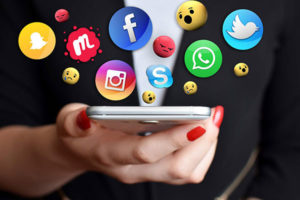Admitting social media evidence in court is not difficult, but it does require ethical considerations and prompt action. You need to ensure that you have:
- Verified the creation and ownership of the content with a witness,
- Collected and preserved the content promptly and ethically to safeguard against deletions and alterations,
- Gathered relevant electronic device records that correspond to the social media content,
- Maintained a flawless chain of custody of the evidence.
In a recent New York Court of Appeals case (People v. Mayo), the lower court unsuccessfully attempted to admit a photograph downloaded from Facebook, alleging the photo belonged to the defendant and depicted the defendant wearing similar clothing worn by the perpetrator. Because the photo was not properly authenticated and the only testimony about the photograph was provided by a police witness who had searched for the Facebook profile one and a half years after the crime, the court ruled not to admit the photo into evidence. Additionally, the People were unable to establish the owner and controller of the photo and therefore could not prove that the photo had been altered.
Legal Standards for Admitting Social Media Evidence
Proper Authentication:
Authenticating social media evidence can take many forms. In People v. Mayo, the defendant’s own acknowledgment of the Facebook photo helped validate it. However, there’s an even more reliable way to prove authenticity: by collecting and preserving the content with its metadata and source code.
Every photo posted to Facebook contains metadata—information embedded in the file itself. This data can reveal when and where the photo was taken, as well as details like file size. Source code, on the other hand, captures the content exactly as it appeared on the original webpage. Even if someone edits or deletes a post later, the source code provides a consistent, defensible snapshot of what was there.
Ethically Collected and Preserved:
It’s not enough to find and download evidence from social media profiles and the web. Collecting evidence requires discretion to protect the chain of custody and adherence to the best evidence rule. Algorithms used on websites and social media profiles can alert subjects about your investigation of their public accounts. Connecting with subjects through “friending” can expose you and your firm to vulnerable data breaches. Collecting evidence improperly can suggest that you may have altered, concealed, or falsified online evidence.
Prompt Action:
Chances are, if you’re looking for social media evidence, the opposition is looking at their social media accounts, too. Once social media posts and profiles are deleted, they’re gone. Acting quickly and discreetly is the only way to ensure you can collect and preserve the evidence you need.
Who You Gonna Call?
SMI Aware is the leader in ethical discovery, collection, and preservation of information from social media, search engines, public records, and the deep web. Our proprietary software and certified analysts preserve evidence in compliance with the legal ethics rules allowing us to secure the chain of custody of evidentiary content like images in our investigations. We help legal professionals find and authenticate scope-driven data in comprehensive reports that are both admissible and accepted in the court of law. Don’t wait! Contact SMI Aware to start investigating today.




